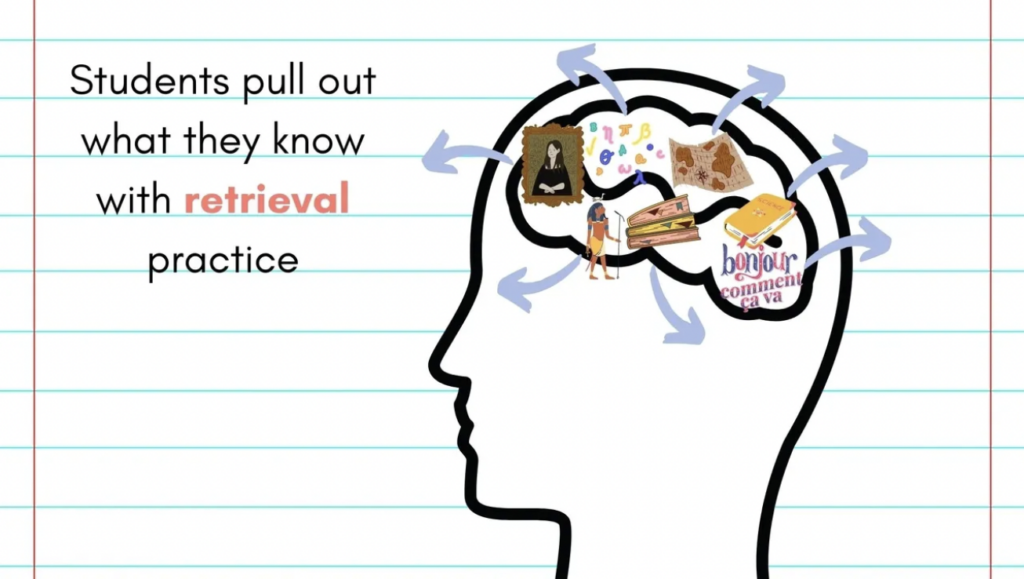Have you heard of retrieval?
I just learned this term a few years ago, but I realized that it’s something that I’d been doing regularly. It’s been the biggest contributor to students remembering science content in my middle school and high school classes.
We often focus on giving more and more and more information – even when reviewing. That’s obviously part of learning as well – students need to get the content in SOME way in the first place.

However, to truly increase retention, students need to be given the time and opportunity to see what they remember. They need to see what they can pull out of their brains. That’s retrieval.
Retrieval is when you ask students to take the time to pull out what they already know from their brains. So you ask a question about something they’ve already learned, and you give them the time to see what they remember.

You can approach this in a meta way as well, meaning that you can tell your students that it’s time for some retrieval practice and why you’re doing it. Students are very receptive and there are low-stakes ways to do retrieval every day that don’t make them feel like they’re being tested all the time.
Here are 3 of my fave ways to practice retrieval:
#1: Short quizzes
You don’t need to prep and copy anything before class – just have them answer a few questions every day. To keep grading light, have them grade their own immediately (this has lots of benefits). Every once in a while you might want to collect them or fully grade them so that you can find and target common misconceptions, but the point is not to make grades count – the point is to make content stick in their brains.
#2: Brain dump/think-pair-share
Give a broad topic that you’ve studied already and give students 5 – 10 minutes to write down everything they remember about it. You can provide some hints if you see a lot of stalling. Then, have them compare their brain dumps with a partner and allowing conversation to unfold. Finish it off with a class share!
#3: Journaling
I love journaling in both science and math classrooms (you can read why in my previous blog post). You can use a journal for all kinds of prompts, and asking students to answer a question about a previous topic is a great way to do that. Prompts that work well for retrieval include things like:
Explain the difference between X and X in a way that your 5 year old sibling would understand.
Describe 3 things you remember about [blank].
What was yesterday’s class about? Write down everything you remember!
You can then read through the journals and address common misconceptions or have follow-up conversations as you see fit.
Not so hard, right? Retrieval doesn’t have to be time-consuming and it’s extremely beneficial to you and your students. You’ll see confidence build, less stress as testing approaches, and you probably noticed that the retrieval itself and the feedback that you can give are both super worthwhile.
Give it a try! If you want some other easy ways to work review and retrieval into your daily classes, grab my freebie here. And for more benefits on review in general, check out this post 🙂
Scientifically yours,
Mo
P.S.
Psst…are you a NEW-ish TEACHER interested in some classroom management tips to ensure you’ll have a stress-free classroom next year? Click here!

Interested in a deep dive into a few of my favourite review ideas? Check out:
How to guarantee that your students will remember what they learn
Student-directed learning and high engagement? Yes, please!
A simple routine to promote reflection and positive relationships
My favourite way to review vocabulary in high school science



